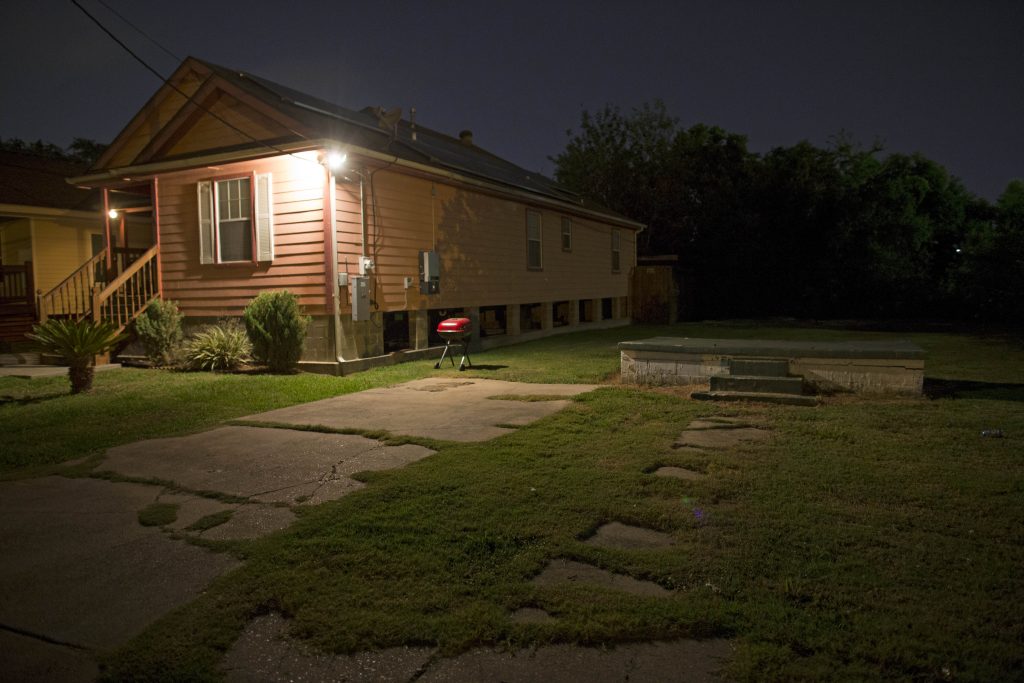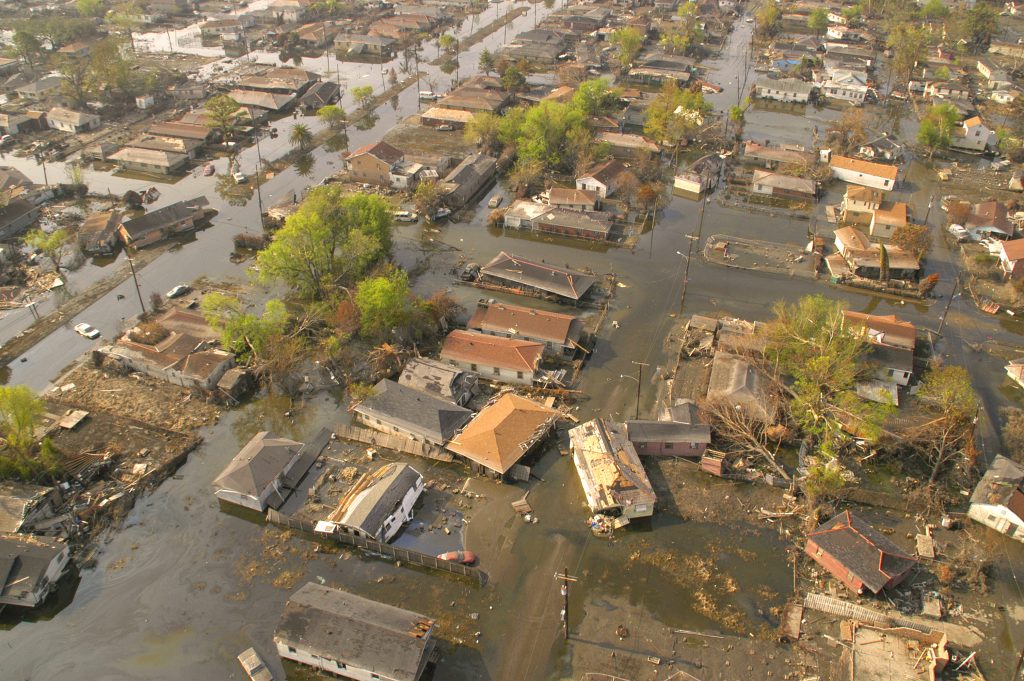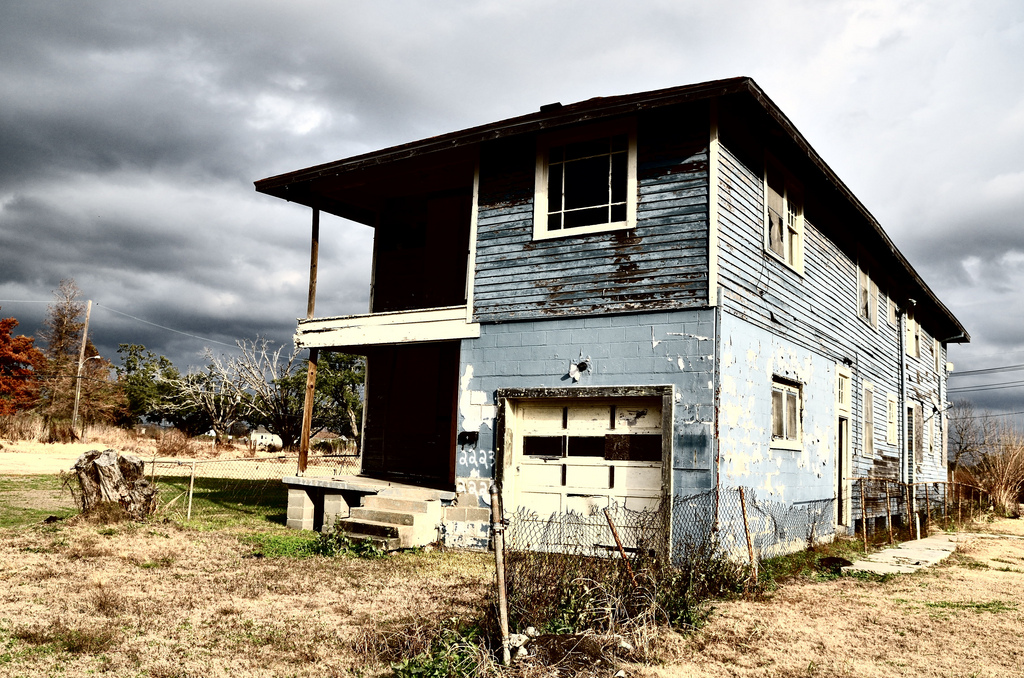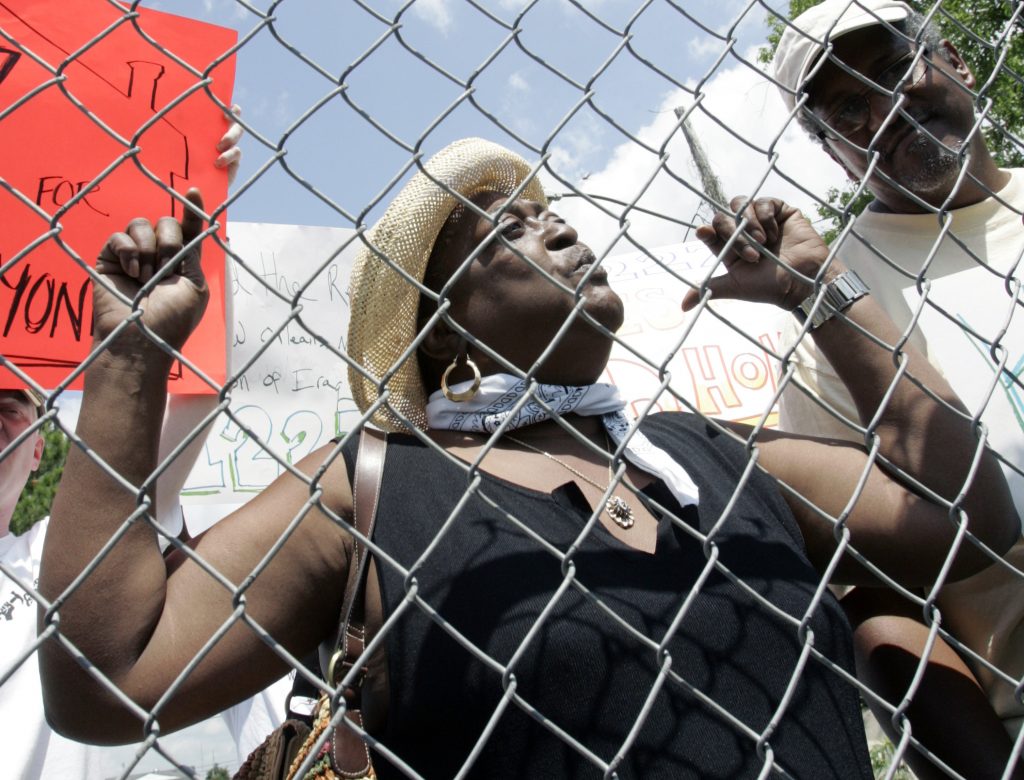Hurricane Katrina’s Forgotten Survivors

When Hurricane Katrina struck New Orleans, Louisiana, in 2005, Ward “Mack” McClendon, a self-employed tow truck driver who restored classic cars in his free time, was living in the Lower 9th Ward, a part of the city that had been historically neglected by the local government and stigmatized by other New Orleanians along lines of race and class. In the 2000 U.S. census, 98 percent of Lower 9th Ward residents identified themselves as black, and of those, a little over half lived in households that earned $19,999 or less per year.
Living in the Lower 9th Ward had taught McClendon to think of himself and his neighbors as unique and irreplaceable individuals who had been shaped by their experiences in the area’s social and natural environments. These life-shaping experiences included partaking in the neighborhood’s rich musical, cultural, and culinary traditions and fishing and trapping in the nearby wetlands of Bayou Bienvenue.
Just before Katrina made landfall near Buras, Louisiana, on August 29, 2005, the hurricane was downgraded from a Category 5 to a 3. Even with this weaker rating, the storm collided with 300 years of development policies and practices that unfairly distributed the flood risk along lines of race and class. Less than an hour after the storm hit, the levees of navigation canals surrounding McClendon’s neighborhood were breached, and the area rapidly flooded, resulting in the deaths of more than 70 of his neighbors. The visual impact of broken levees and flooded homes caught the eye of news media producers, and the Lower 9th Ward instantly become a familiar image in the minds of people around the world.
Unfortunately, the Lower 9th Ward’s newly attained iconic status as the public face of Katrina did not translate into an avalanche of aid for its most devastated residents. Four years after the hurricane, approximately 15 percent of the area’s pre-Katrina households were actively receiving mail, a proxy measure used by demographers to estimate the rate of population return after the hurricane. By 2015, this number had increased to only 37 percent, while the citywide figure had risen to 90 percent.
On the last occasion I spoke with McClendon before his untimely death at the age of 61 in 2015, he was deeply concerned about the loss of what he considered a key measure of disaster recovery: The presence of friends, neighbors, and relatives whose particular ways of speaking, behaving, and socializing generated a sense of wellness for him. “This community had the highest rate of homeownership in the state,” he said. Yet people there were being treated like they broke the levees and being given a “one-way ticket out,” he reflected. “We had seven schools before Katrina. We have one now.”
One of the challenges of disaster reconstruction is that the populations that are most vulnerable to a catastrophe’s effects are often the most socially disenfranchised, such as the Lower 9th Ward residents. In addition, urban planners and high-level philanthropic agencies often have very different visions for recovery compared with the disaster survivors that they are tasked with helping.
In the 10 years following Hurricane Katrina, I conducted ethnographic research focused on this question: How will recovery practices on the part of governmental organizations and nonprofits engage and assist New Orleanians who were most severely impacted by the disaster? Something I have documented over the course of my work is that the collection of reconstruction “experts” and managers who work for or are subcontracted by disaster relief agencies usually arrive at affected localities with their own ideas about what constitutes “rebuilding better.” The rigid application of their “best practices,” however, can effectively prolong the disaster for those who suffer the brunt of a catastrophe.
Take, for example, two of the city’s official recovery planning processes, the New Orleans Neighborhoods Rebuilding Plan (NOLANRP), or “Lambert Plan,” and the Unified New Orleans Plan (UNOP). In theory, the Lambert Plan and UNOP were supposed to be participatory planning processes in which all city residents, regardless of socioeconomic background, could act as collective authors of the city’s reconstruction directive. However, this is not what occurred in practice.
Both plans endorsed the joint decision by the U.S. Department of Housing and Urban Development (HUD) and the Housing Authority of New Orleans (HANO) to demolish the city’s main public housing facilities and redevelop the areas as mixed-income communities—promising only 1,904 units to replace the original 4,500. This decision eliminated much of the available affordable housing for working-class and working poor New Orleanians in these neighborhoods. Meanwhile, the real estate market has soared, with home prices now out of reach for many of the city’s low-income families.
To further complicate matters, in neighborhoods like the Lower 9th Ward, the state’s Road Home program, which was intended to assist homeowners with the cost of housing reconstruction, relied on pre-disaster property values to determine beneficiary awards. These prices reflected pre-disaster classist and racist prejudices that lowered property values and resulted in affected families receiving much less assistance than they needed to rebuild. For McClendon, recovery policies that did not prioritize the return of pre-Katrina residents as their main objective ran the risk of “putting the cart before the horse.” His use of this proverb called attention to what many 9th Ward residents believed were the misplaced priorities of those involved in recovery, which seemed to ignore the local ways of defining and imagining reconstruction.
On the 10-year anniversary of Hurricane Katrina, President Barack Obama gave a speech in the Lower 9th Ward to commemorate the disaster. In the speech, Obama stated that the rebuilding in New Orleans aimed to build a city as it should be—“a city where everyone, no matter who they are or what they look like or how much money they’ve got, has an opportunity to make it.” However, it is also the city that, in 2014, was missing 97,385 African-American residents who had called New Orleans home prior to Hurricane Katrina. Some of these residents now live in the city’s suburbs, while others have forged new lives in Atlanta, Houston, and Baton Rouge, among other cities.
New Orleans is also a city where 1,900 families live in public housing facilities, compared to more than 5,000 before Katrina. Yes, New Orleans is a great bonanza for real estate investors and young, highly educated new arrivals, but for people like McClendon and his neighbors, it is not a land of equal opportunity. The great irony of New Orleans’ reconstruction is that the disaster has been an opportunity for those who were not vulnerable, and for those who were vulnerable, the disaster has become an ongoing part of everyday life.
Yet this reality has not translated into apathy or passivity among pre-Katrina residents. In the years following the storm, McClendon and other residents devoted themselves to community organizing in ways they never imagined before the catastrophe. Despite unfavorable odds, many residents of the Lower 9th Ward continue to sacrifice their time and resources to rebuild their neighborhood according to their vision of recovery, not that of outside planners and philanthropists.
“Believe it or not, before Katrina, I was a very private person, okay, but my community is hurting so bad, I can never be the same,” McClendon once told me. He believed that the disaster’s impact on his community changed him as a person—from someone who was solely focused on his own financial advancement before Katrina to someone who was deeply committed to community organizing and revitalization after the hurricane. McClendon considered this a positive change that made him hopeful about the future of his neighborhood and his nation. “It’s a good way,” I remember him saying. “It makes you start caring about people.”
Correction: May 22, 2016
An earlier version of this article stated that Katrina made landfall in 2015, rather than 2005.


































